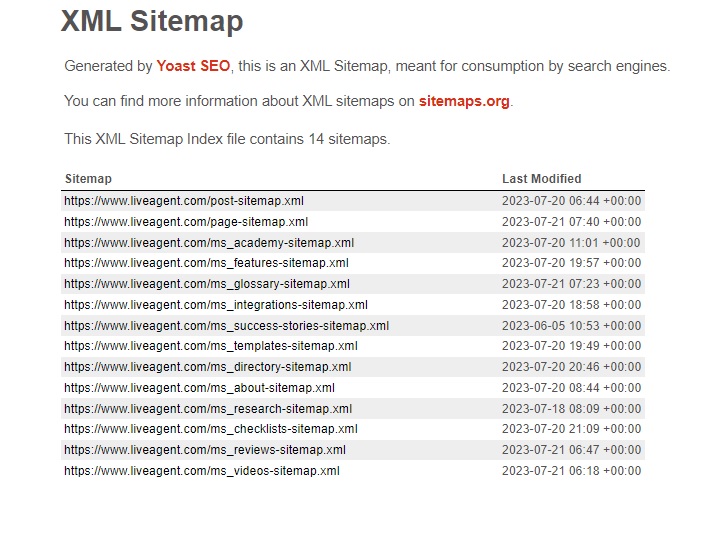On-Page SEO
On-Page SEO involves optimizing elements within your website to improve search engine rankings, user experience, and drive organic traffic.
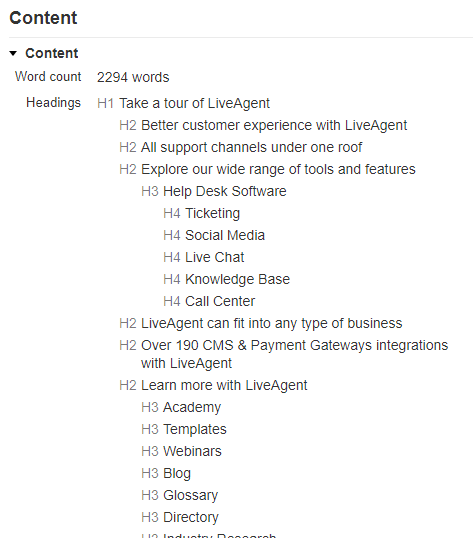
On-Page SEO
- Why is On-Page SEO important?
- Enhancing user experience with on-page SEO
- Boosting website’s ranking through on-page SEO
- How on-page SEO helps with website trust and credibility
- How to do on-page SEO
- Use an H1 tag for your page title
- Use H2-H6 tags for subheadings
- Write a compelling title tag
- Write a compelling meta description
- Set SEO-friendly URLs
- Optimize your images
- Add Schema Markup
- Useful on-page SEO tools
- URLsLab SEO automation tools
- Google Search Console
- Ahrefs Keyword Explorer
- Google Developers PageSpeed Insight
- Conclusion
- FAQ
- What is On-Page SEO?
- Why is on-page SEO important?
- How quickly will I see results?
- When should you do On-Page SEO?
- How can I automate my On-Page SEO?


On-page SEO , otherwise known as on-site SEO, is a practice of optimizing various elements on each page of your website to make them more search engine-friendly. It is a valuable part of a successful content marketing strategy. Some of the key elements of on-page SEO are keyword optimization, URL structure, internal links , and image optimization.
Using on-page SEO factors to better organic (non-paid) traffic, enhanced website visibility, and improved relevance.
What’s the difference between On-Page SEO and Off-Page SEO?
As we have already discussed, on-site SEO refers to optimizing elements within your website itself. By implementing on-site SEO, you are creating a structured, well-rounded UX-based website that can organically attract an audience by matching their search intent .
Off-site SEO, on the other hand, involves activities outside the website that improve its online reputation, authority, and relevance. Typically, it consists of building backlinks and generating social signals. With off-site SEO, you are building rapport and trust, mainly through reputation management. Off-page SEO contributes to your website’s ranking even after you change and adjust on-page content optimization.
On-page and off-page SEO are essential components of building sustainable, organic website traffic. While they differ in their approach, a website with good Core Web Vitals should incorporate both to strike the balance of the optimal user experience, search engine optimization, and a trustworthy reputation in the market.
Why is On-Page SEO important?
On-page content optimization for search engines is a crucial part of running a successful website and content marketing strategy. It doesn’t matter whether you’re building a site for an established enterprise or creating a simple blog as a passion project; on-page SEO brings many benefits to everyone who knows how to implement it correctly.
Enhancing user experience with on-page SEO
User experience is the bread and butter of a well-performing website, and with mobile devices getting increasingly popular, retaining and expanding your audience requires optimizing your website. A whopping 96% of users have encountered websites that weren’t optimized for mobile at all. As a website owner, you should focus on optimizing your site for both desktop and mobile devices, while keeping the website structure clear, concise, and accessible.
Boosting website’s ranking through on-page SEO
Through on-page SEO, you can optimize your web pages to enhance your website’s ranking. Here are some key strategies to boost your website’s ranking using on-page SEO:
- Conduct keyword research: Identify relevant keywords and phrases that align with your content and target audience, and naturally incorporate them into your page titles, headings, meta tags, URLs, and throughout the content. However, make sure you avoid keyword stuffing.
- Optimize title tags and meta descriptions: Create unique and compelling title tags and meta descriptions for each page. Use online tools like the URLsLab plugin to help you ensure your meta tags accurately describe the page’s content and include relevant keywords.
- Create high-quality content: When it comes to SEO ranking factors, content quality matters. Develop valuable and engaging content that is easy to read and satisfies search intent.
- Optimize URLs: Create clean and descriptive URLs that accurately represent the page’s content. Include relevant keywords to provide search engines with additional context.
- Improve page loading times: Optimize your website’s performance to ensure fast page load times. Compress images, minify code, leverage browser caching, and use a content delivery network (CDN) to improve website speed. If you don’t want to do all of this manually, there are popular tools like the URLsLab plugin that can automate this process and do the footwork for you.
- Optimize images and manage media: Compress and optimize images to reduce file sizes for better load times, and include relevant alt tags to provide context to search engines and improve accessibility.
- Implement internal linking: Internal link building links together relevant pages using descriptive anchor texts. Internal links help search engines navigate your site, improve user experience, and distribute link authority.
- Regularly update and optimize: Continuously monitor and update your website’s content, keywords, and other on-page elements. Keep your website relevant by adding new content, optimizing underperforming pages, and staying up-to-date with industry trends and user needs.
How on-page SEO helps with website trust and credibility
Having a user-friendly and SEO-optimized website comes with increased trust, relevance, and credibility. Let’s look at some ways you can use on-page SEO to boost your website’s trust.
Using on-page SEO to create an engaging user experience
A website that is well-designed, easy to navigate, aligns with search intent, and provides a seamless user experience builds trust and credibility with visitors. When users have a positive experience on your website, they are more likely to perceive it as trustworthy and reliable and even write positive reviews. This way, you don’t have to break the bank on your content marketing strategy and show up among the first results in a Google search.
Providing clear and transparent information
It is important that the content on your website reflects the title tags and meta descriptions accurately, as this establishes trust and transparency. Users are more likely to trust a website that delivers what it promises in Google search results .
Adding authoritative backlinks
Off-page SEO is primarily responsible for acquiring backlinks, but on-page SEO can contribute indirectly. High-quality, well-optimized fresh content on your website will make other websites consider it a reputable source, and they will link to it. In the eyes of search engines and potential visitors, these backlinks give your site credibility.
Be consistent and update regularly
Keeping your website’s content and on-page elements updated shows your dedication to providing up-to-date fresh content. If you don’t post anything for a long period of time, internet users tend to forget about your site no matter the type of content you create.
How to do on-page SEO
Let’s look at some steps you can use for your website to boost its search rankings.
Use an H1 tag for your page title
H1 tags serve as a good starting point for developing a logical structure for your blog posts. From an SEO perspective, including your target keywords in the H1 tag can signal to search engines that your page is relevant to those keywords, improving its visibility and ranking.
You might also consider using H1 tags because of improved accessibility for visually impaired users and overall better user experience.
Use H2-H6 tags for subheadings
Breaking down your content to H2-H6 subheadings comes with multiple benefits:
- Improved readability and user experience: By using H2-H6 tags, you establish a clear visual hierarchy, allowing readers to navigate through your content more efficiently.
- Organized content structure: Having a clear content structure makes it easier for search engines to crawl and index your SEO content, as well as allowing them to understand the context and relevance of each section.
- SEO and keyword optimization: Subheadings are an opportunity to incorporate target keywords into your content. By adding primary keywords to your H2-H6 subheadings, search engines can index the topics discussed within each section and identify whether they match a given search query.
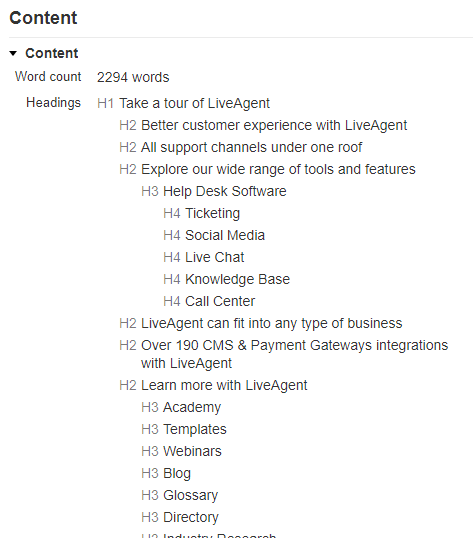
Accessibility and assistive technologies: Properly marked-up subheadings using H2-H6 tags ensure accessibility for users who rely on assistive technologies, such as screen readers.
Write a compelling title tag
Your title tag is there to inform internet users about the theme of your article while being enticing enough to make potential visitors click on it. On top of that, title tags provide another opportunity to add relevant primary keywords so search engines can properly index your content.
By writing compelling title tags, you enhance your article’s visibility, attract more clicks, improve user engagement, and build your brand’s recognition. When writing a title tag, use power words, action verbs, numbers, and other attention-grabbing techniques. However, keep it clear and concise, and avoid broad terms. Your title tag should be around 50-60 characters so it displays correctly without being truncated on different devices.
Write a compelling meta description
Meta descriptions serve as snapshots of your content, giving a short overview of the topics and themes discussed in your article. By writing compelling meta descriptions, you are more likely to grab users’ attention, get a better click-through rate, and ultimately improve your website’s engagement and visibility. On top of that, meta descriptions are a perfect opportunity to further optimize your SEO content to boost your search engine rankings. To discover the best long-tail keywords you should incorporate, look at the various keyword research tools online.
Keep your meta description concise (around 150-160 characters) to ensure it displays fully in search results without being cut off. To encourage clicks, use persuasive language, highlight unique features of your content, and include a call-to-action.
Set SEO-friendly URLs
SEO-friendly URLs help search engine crawlers better index your website, which leads to higher SEO rankings and more organic traffic to your site. SEO-friendly URLs are usually short and keyword-rich.
When creating SEO-friendly URLs, use the HTTPS protocol, rather than HTTP, as HTTPS is safer. Also, consider hiding the www prefix; it will make the URL look cleaner, use mostly lower-case letters, and hyphenate words to separate them.
This is an example of an SEO-friendly URL:
www.urlslab.com/pumpkins/example
Optimize your images
Including visually-appealing images in your content is a great way to boost user engagement. Make sure your images are optimized to avoid slow loading speed. When it comes to optimizing the visual part of your content, online tools like the URLsLab plugin can help you with image files and media management, with features like lazy loading and image SEO optimization.
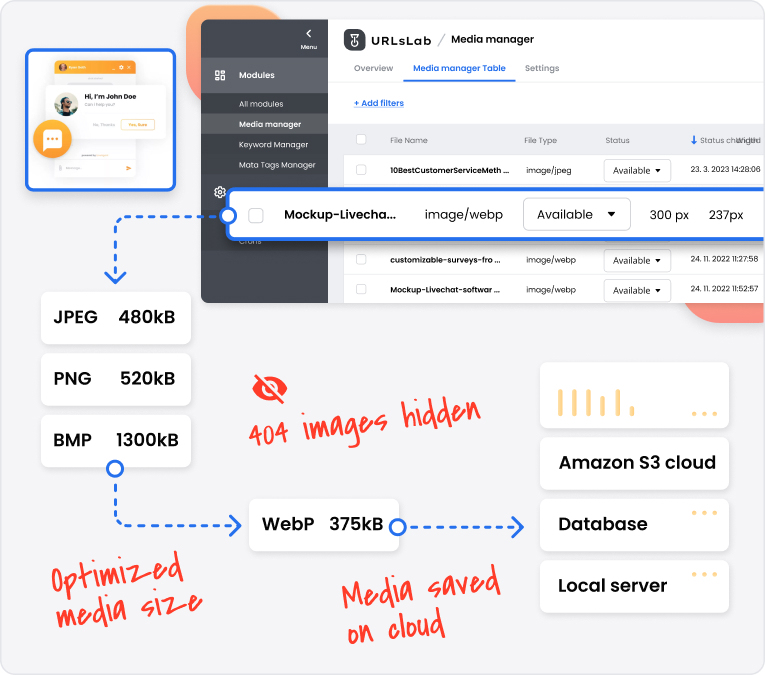
Add Schema Markup
Search engines read and understand your content using schema markup , otherwise known as structured data . Search engines classify and categorize web pages based on a semantic vocabulary (code).
Adding Schema Markup to your content gives search engines a clearer picture of the content’s nature and context, and helps them match it to a user’s search intent. It also helps organize and structure your website’s data in a standardized format, improves the visibility and click-through rates of your search results, and enhances the user experience.
Useful on-page SEO tools
Managing on-page SEO is a daunting task, even for the most skilled website managers. The good news is that you don’t have to do it all manually. Below, we will discuss some of the online tools that can make your job easier while boosting your website’s search ranking and overall performance.
URLsLab SEO automation tools
URLsLab is a powerful plugin for WordPress that helps you automate your SEO processes, enhance the visitor experience, and improve user engagement.
Some of URLsLab’s key features include:
- SEO Automation Tools
- AI Content Generator
- Image SEO
- Meta Tags Manager
- UX Tools
- Internal links manager
- Media Management
- Lazy Loading
- Database Optimizer
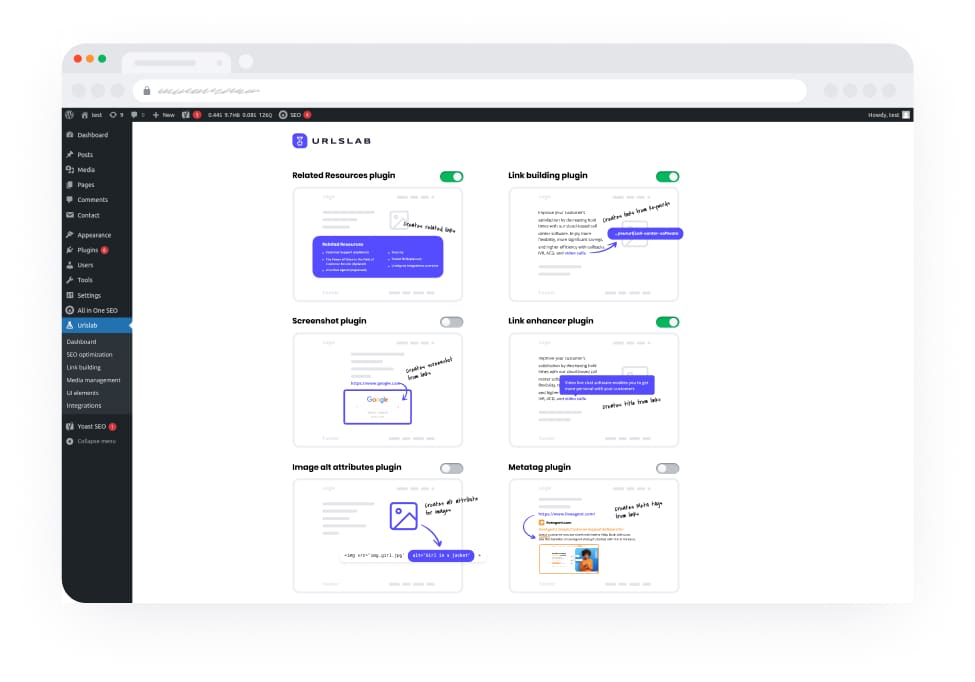
Without the need for coding expertise, you can use URLsLab to automate your SEO processes such as keyword management, internal links, implementing meta tags, monitoring and redirecting 404 errors to avoid broken links, and many more. On top of that, URLsLab comes with AI-powered tools that make content creation and optimization a straightforward and streamlined process.
Google Search Console
Google Search Console is a free web service that provides insights and online tools to help you understand how Google perceives your website, identify and fix potential issues, and improve your site’s visibility in search.
Some of its key features include:
- Performance Reports
- URL Inspection Tool
- Mobile Usability Report
- Sitemap Submission
- Security Issues Alerts
Ahrefs Keyword Explorer
Ahrefs Keyword Explorer is a popular tool for keyword research that provides valuable insights and data to help you discover and analyze keywords, assess their search volume and difficulty, and develop effective keyword strategies for your website.
Here are some of Ahrefs Keyword Explorer’s features:
- Keyword Research:
- Keyword Difficulty Score
- SERP Overview
- Related Keywords and Questions
- Clicks Metrics
- Historical Data and Trends
Google Developers PageSpeed Insight
Google PageSpeed Insights is a web performance analysis tool that provides insights and recommendations for optimizing the speed and performance of web pages.
Here are the key features of Google PageSpeed Insights:
- Performance Scoring
- Mobile and Desktop Analysis
- Optimization Suggestions
- Diagnostic Information
- User Experience Metrics
- Detailed Reports
Conclusion
On-page optimization for search engines is crucial for running a healthy, successful website with heaps of organic traffic. Implementing SEO strategies like creating enticing titles, optimizing your site for mobile users, adding visual hierarchy to your content, optimizing image files, setting SEO-friendly URLs, and adding relevant keywords and phrases to each piece of content brings many benefits not only to you but also to your website visitors.
User experience and accessibility are also significant for onsite optimization. Creating a site that is easy to navigate, aligns with search intent, and is accessible to all visitors boosts your visibility, gives you a competitive edge, and improves your website’s trustworthiness and credibility.
Keeping a consistent and optimized site is not an easy task, so don’t be afraid to experiment with online SEO tools like the URLsLab plugin. A popular tool such as this one can help you automate your SEO processes, boost website performance, decrease bounce rate , and create a user-friendly experience for your visitors.
FAQ
What is On-Page SEO?
The broad term “on-page SEO” refers to optimizing various elements of your website on each page to make them more search engine-friendly. Optimizing keywords, URL structure, internal links, and image optimization are just a few of the key elements of on-page SEO. It’s a crucial part of digital marketing no matter the type of content you create. The aim of this type of content marketing strategy is to bring more organic search traffic to your website.
Why is on-page SEO important?
SEO on-page optimization is crucial for your website’s ranking and visibility, as well as user experience. With a well-optimized site, it’s easier for search engines to index it correctly and display it at the top of search results. Although there are more ranking factors, optimizing your site for search engines is the best starting point.
How quickly will I see results?
The time it takes to see the results of implementing on-page SEO is fairly individual. Although your on-page SEO efforts can help with driving traffic, it is still in the context of your particular niche and user base. However, if you want to boost your results, consider implementing popular tools such as the URLsLab plugin that can streamline your SEO processes and help you build a better-performing website.
When should you do On-Page SEO?
It’s best to start optimizing your website right from the get-go and not wait for a long period of time. The market is competitive and internet users and potential visitors probably don’t know the proper search term to reach you. The sooner you start optimizing your content, the better for your Core Web Vitals. If you already have a large website with a lot of content, you can opt for tools like URLsLab to automatically optimize your site for you. This way, you don’t have to go back and optimize each piece of content yourself.
How can I automate my On-Page SEO?
Frequently asked questions
- What is On-Page SEO?
On-page SEO refers to optimizing various elements of your website on each page to make them more search engine-friendly. This includes optimizing keywords, URL structure, internal links, and images. It’s a crucial strategy to increase organic search traffic and improve website visibility.
- Why is on-page SEO important?
On-page SEO is crucial for your website’s ranking, visibility, and user experience. Optimizing your site helps search engines index it correctly and display it higher in search results, leading to increased organic traffic.
- How quickly will I see results?
The time to see results from on-page SEO varies by niche and website, but leveraging tools like URLsLab can help streamline your efforts and improve website performance faster.
- When should you do On-Page SEO?
You should start optimizing your website for on-page SEO as early as possible. Early optimization improves your chances in search rankings and ensures better user experience from the start.
- How can I automate my On-Page SEO?
You can automate your on-page SEO using specialized tools like the URLsLab plugin, which helps with keyword management, internal linking, meta tags, and other essential SEO elements to improve your site’s performance.
Automate Your On-Page SEO
Streamline your website optimization and boost your rankings with URLsLab’s SEO automation tools.


